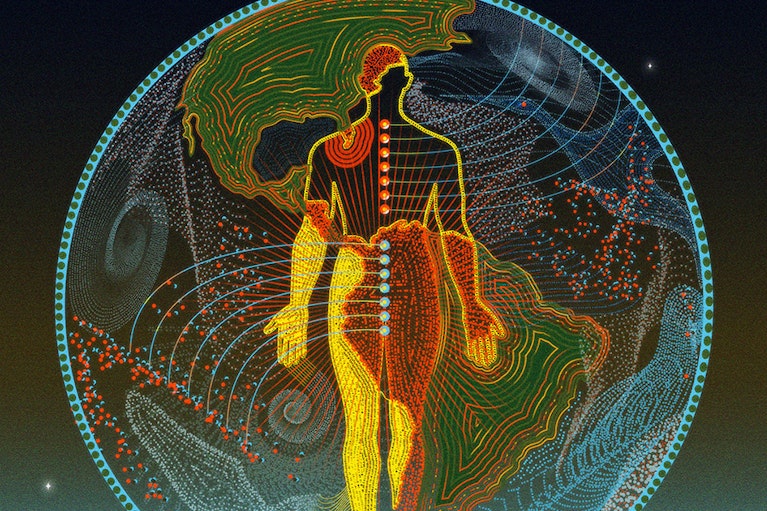Bryan Appleyard is a journalist and author.
Jim Lovelock is rediscovering childhood at the age of 101.
“I imagined when I passed a hundred, it was downhill all the way,” he told me recently. “And that death would occur in the not-too-distant future. It hasn’t felt like that at all. A light has come on, and everything is interesting again.”
His latest idea concerns hornets — not, he insists, fierce murder hornets, but rather “pleasant” British ones. He thinks humans may be evolving in a hornet-like direction.
“Could it be that we could evolve as a nest animal living in cities in the way that hornets do?” he wondered. “We could become a thoughtful, happy and intelligent species.”
The more mundane cause of Lovelock’s second coming may be the fact that he has freed himself from the grip of opiates he was wrongly prescribed for pain. Suddenly, that mighty mind sprang back to life. He is now thinking more radically even than he was in 1972, when he first proposed the Gaia hypothesis that transformed our understanding of Earth and our place in it.
Even if you know Lovelock well, as I do, all his ideas can, on first contact, bewilder. The hornets, for example, recently appeared alongside the alternative possibility that we should “emulate the cephalopods, become aquatic and let the ocean or a pond carry the weight of a large brain.” That, in turn, came after his prediction that hyperintelligent artificial intelligence systems would relieve us of the problem of dealing with global warming by thinking 10,000 times faster than humans.
Crazy, right? Yes, but in a good way, in the best possible way. Once you tune into Lovelock’s wavelength, the tumult of ideas makes sense, opening your mind and — like great art — taking you out of yourself and your ordinary way of life. Tuning in, however, requires an effort of the imagination that many cannot or refuse to make. The Gaia hypothesis initially encountered widespread derision and dismissal. It is now embedded in much of our ecological thought and yet, perversely, still treated with suspicion.
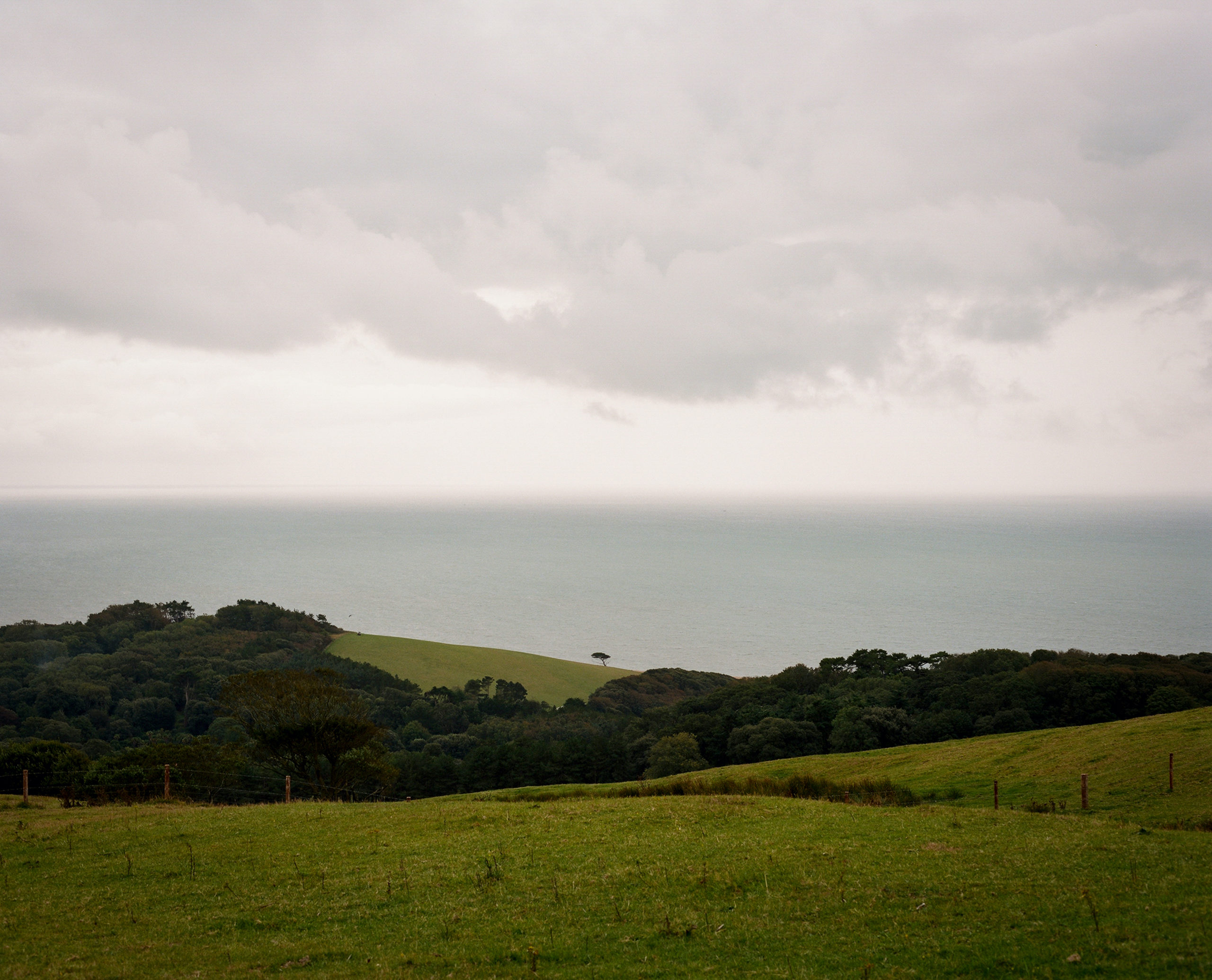
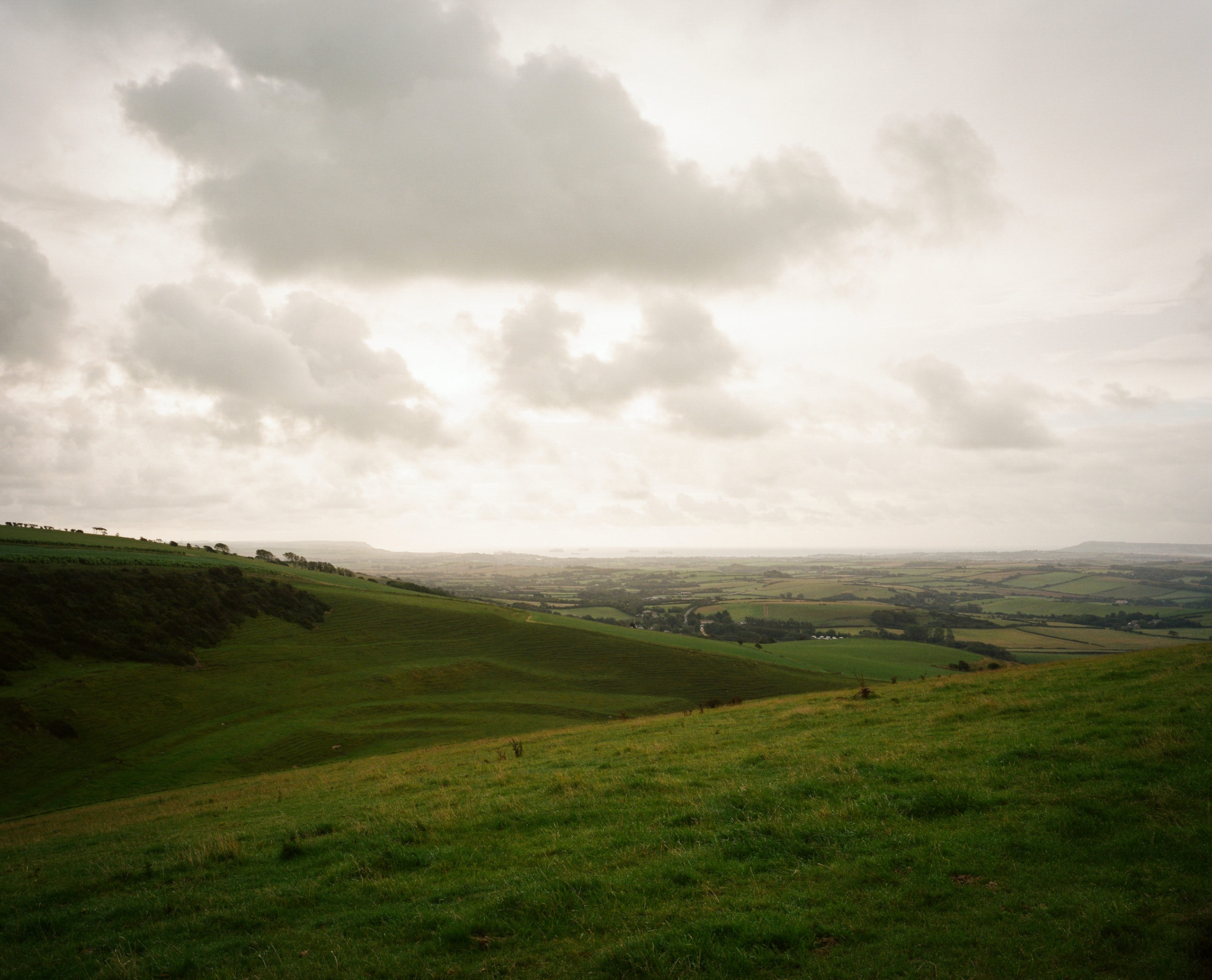
“For me, [the Gaia hypothesis] is the greatest discovery of this period,” the French thinker Bruno Latour recently told The Guardian, “though it is still not very much accepted by mainstream science. This may be because we do not yet have the tools to receive it.”
Nevertheless, in spite of the derision, Lovelock is hailed as a genius by some of the greatest scientific thinkers of our age. At his hundredth birthday party last year, held amid the early 18th-century splendor of Blenheim Palace in Oxfordshire, the great, the good and the intimidatingly smart attended in large numbers.
“He is,” said the philosopher John Gray in one of the opening speeches, “one of the great thinkers of our time … a genius of a kind one would be lucky to meet in several lifetimes.”
Gray then gave everybody a route map into Lovelock’s mind. He said he relies “on a kind of mosaic thinking, in which a pattern of ideas surfaces in the mind and shows the way forward.” Mosaic thinking is the reason his ideas often sound, at first, confusing or just strange. He thinks like few other people. And the way he thinks cannot be separated from what he thinks.
“Once you tune into Lovelock’s wavelength, the tumult of ideas makes sense, opening your mind and — like great art — taking you out of yourself and your ordinary way of life.”
When I first met him in 1988 at his home in Devon, I found myself toying with the idea that he was deranged. There was a radioactivity warning sign on the gate, and the house was called “Coombe Mill Experimental Station.”
“I have to call the place an experimental station,” he explained back then. “If you’re having a kilogram of radioactive material delivered, it can’t be something like Acacia Road, Finchley. It could lead to terrible mistakes.”
Lovelock has always been at home with radioactivity. He once offered to take a chunk of radioactive waste and bury it in his garden to heat the house. He thinks fear of radiation is massively overblown. It is, after all, everywhere, all the time.
He explained Gaia to me clearly enough, but I still felt that I had fallen through a looking glass. The headline idea is that Earth could or should be seen as a single organism. Struggling for ways of discrediting this seemingly preposterous idea, some critics said it couldn’t be true because, unlike all other organisms, the Earth did not reproduce. Lovelock responded, mosaically, that no organism that had lasted 4 billion years needed to reproduce.
Soon afterward, I came to understand not just Gaia itself, but also its implications. The theory states that the living and non-living matter of the Earth form an interacting whole. The structure of academic disciplines, including philosophy, tends, for administrative reasons, to break down into separate silos. From within this structure, it would be hard to imagine Gaia because it takes in chemistry, biology, physics, geology, meteorology, botany, zoology — in fact, more or less everything. It does so because the idea demands it. If the Earth is a single organism, then it can only be understood as a whole.
Gaia came to popular attention in an article Lovelock cowrote with Sidney Epton for New Scientist in 1975. “Consider the following propositions,” they wrote. “1. Life exists only because material conditions on Earth happen to be just right for its existence; 2. Life defines the material conditions needed for its survival and makes sure that they stay there.”

The first is obvious — but so is the second, if you look outside your silo. Life, the article points out, has persisted for 3.5 billion years, and yet even slight changes in variables like temperature, humidity, ocean salinity and acidity could have wiped it out in an instant. The only credible reason this has not happened is that life itself is regulating the climate.
Incredulity reigned as Lovelock and the microbiologist Lynn Margulis developed the theory together through the 1970s. And it still does — though some were converted when, in 1983, Lovelock, with atmospheric scientist Andrew Watson, came up with Daisyworld, a computer simulation of how Gaia works. Imagine a planet orbiting a star whose heat output slowly rises and falls. Only two organisms inhabit this planet — black daisies and white daisies. Black daisies absorb light and warm the planet; white daisies reflect light and cool the planet.
When temperatures increase, white daisies have a selective advantage and their numbers increase. The temperature falls. When temperatures fall too low, black daisies increase. And so on. Over time, the surface temperature remains constant, and both daisy species survive and thrive. Scale that up to include billions of animal and plant species, and the goddess Gaia emerges in all her glory. Lovelock once said Daisyworld was his proudest invention. He wrote that it “shows how self-regulation could be a property of a planetary system and result from the tight coupling of biological and physical evolution.”
This “tight coupling” lies at the heart of Gaia. It is, as Lovelock and Epton’s New Scientist article suggests in its conclusion, a transformative view of our place on the planet. Without us, Gaia would carry on; without Gaia, we would be extinct. It was time to abandon “19th-century technocratic thinking, to reject the idea that human existence is necessarily a battle against nature. Let us make peace with Gaia on her terms and return to peaceful coexistence with our fellow creatures.”
“On her terms” meant certain types of naive humanism could not survive the Gaian insight. We could no longer be masters of our fate, the sole creators of purpose. Unless we aligned our purposes with those of Gaia, we would be swept aside.
From within their silo, biologists scoffed. Stephen Jay Gould said Gaia was “a metaphor, not a mechanism,” Richard Dawkins said it conflicted with Darwinian evolution, John Maynard Smith said it was “an evil religion,” and Robert May described Lovelock as a “holy fool.” “Holy fool” was probably intended as an insult but might sound to Lovelock like high praise. Clearly, the establishment was threatened by such anti-silo thinking.
“The Earth should be seen as a single organism.”
At that first meeting, I asked Lovelock how he felt about the anger and rejection. He smiled and shrugged. “Every idea takes at least 40 years to be accepted,” he said. His timing was exactly right.
The book, “Gaia: A New Look at Life on Earth,” came out in 1979, but to those with ears to hear, it had all been in that New Scientist article as, indeed, were the heart and soul of later environmental thinking. It is glaringly obvious now that to wage war against nature is to wage war upon ourselves, that human activity has planetary consequences, that Gaia is replete with observable mechanisms, that it does not conflict with Darwinian evolution but rather adds to and deepens it. Now, though they may not even realize it, many climate scientists and green campaigners are Gaians.
The most important implication of Gaia is that she removes humanity from the pedestal on which it had placed itself. We are not stewards of nature or technocratic overlords. We are Gaia’s consciousness — we think, we plan, we build, we understand — but she doesn’t need us. However refined our understanding of nature, it will amount to nothing unless Gaia approves of our actions by allowing us to survive. We must, therefore, be realistic about our powers.
“Save the planet!” Lovelock has often said. “We never could save the planet.”
We must also be realistic about our place in the universe. Earth is our only viable home. A new generation of spacefarers, imbued with the spirit of Star Trek and Star Wars, don’t want to hear this. Elon Musk said in 2013 that he wants “to die on Mars, just not on impact.” Lovelock caustically responded: “Martian conditions suggest death on impact might be preferable.”
Sci-fi fantasies, combined with fears for the continuing viability of earthbound human life, have inspired the idea — embraced by Stephen Hawking and others — that we may have to move to other planets. This is folly. There is nowhere else to go and no technology that could get us there. New spacefarers may dream of wormholes and warped space that would let us traverse interstellar distances. But dreaming does nothing for human survival.
Bruno Latour and others point out that Gaia has introduced us to the idea of the “critical zone,” the area that is a few miles above and below the Earth’s surface in which all life exists and that is therefore our only home.
“It is very different,” he wrote recently, “from the way of thinking that makes people such as Elon Musk think they should go on a mission to Mars. That is escapist. But when you think in terms of a critical zone, you are locked in; you cannot escape. What does it mean for politics if we are locked in and not in the infinite cosmology opened by Galileo? It means we cannot behave in the same way. It means we cannot just endlessly extract resources and discard our waste. In the critical zone, we must maintain what we have because it’s finite, it’s local, it’s at risk and it’s the object of conflict.”
Here we stand, and here we stay. We must submit to Gaia and do nothing to harm her.
At this point, you may think that Lovelock must be hailed as the supreme sage of the green movement, the prophet who justified the most fundamental environmentalist conviction — that our ravaging of the Earth must stop if we are to survive.
You would be wrong. Lovelock can’t stand the greens. He once called Greenpeace “environmental Rambos,” and they ignore him in return. I was stunned into abject silence listening to a recent BBC radio discussion when a green dismissed him as some old guy who believed our problems could be solved by scientists from the 1950s dressed in white coats.
The primary source of contention is nuclear power, which many greens unthinkingly reject in all its forms. Lovelock embraces it.
“It will not do anything harmful to the planet itself. If treated properly, it’s a very reasonable, cheap fuel,” he told The Times.
The more profound problem is that greens tend to reject such positive technical fixes in favor of negative solutions like banning fossil fuels, taking people’s cars away and so on. Lovelock believes in engineering and technology as our only path to salvation. He is an eco-modernist, though he hates such titles, which means he does not want to go back to the mythical rural paradise some greens dream of.
He has also wavered on the issue of global warming. In his 2014 book, “A Rough Ride to the Future,” he suggested it was not such a big problem, and we could live with the sort of temperature rises that terrify many of us. But this was just Lovelock doing what he does best — thinking in public. Unlike many media-trained spokespeople who peddle simple and wrong scientific soundbites in the name of foolish consistency, he offers only the workings of his own mind.
In any case, he now says that in the long term, we have no choice but to cool the planet. We are condemned to live with the sun, a perfectly ordinary main sequence star. Such stars increase in brightness as they grow older. Since life began, Gaia has controlled the increasing heat from our star, but she cannot do this forever. The best we can do is keep Earth habitable for a little longer. One day — with luck, in the distant future — our defenses will fail.
“The more you can keep the Earth cool,” he explained recently, “the more you can delay the ultimate end point when the sun becomes too hot — because you can’t stop the sun heating up. It’ll just go on heating.”
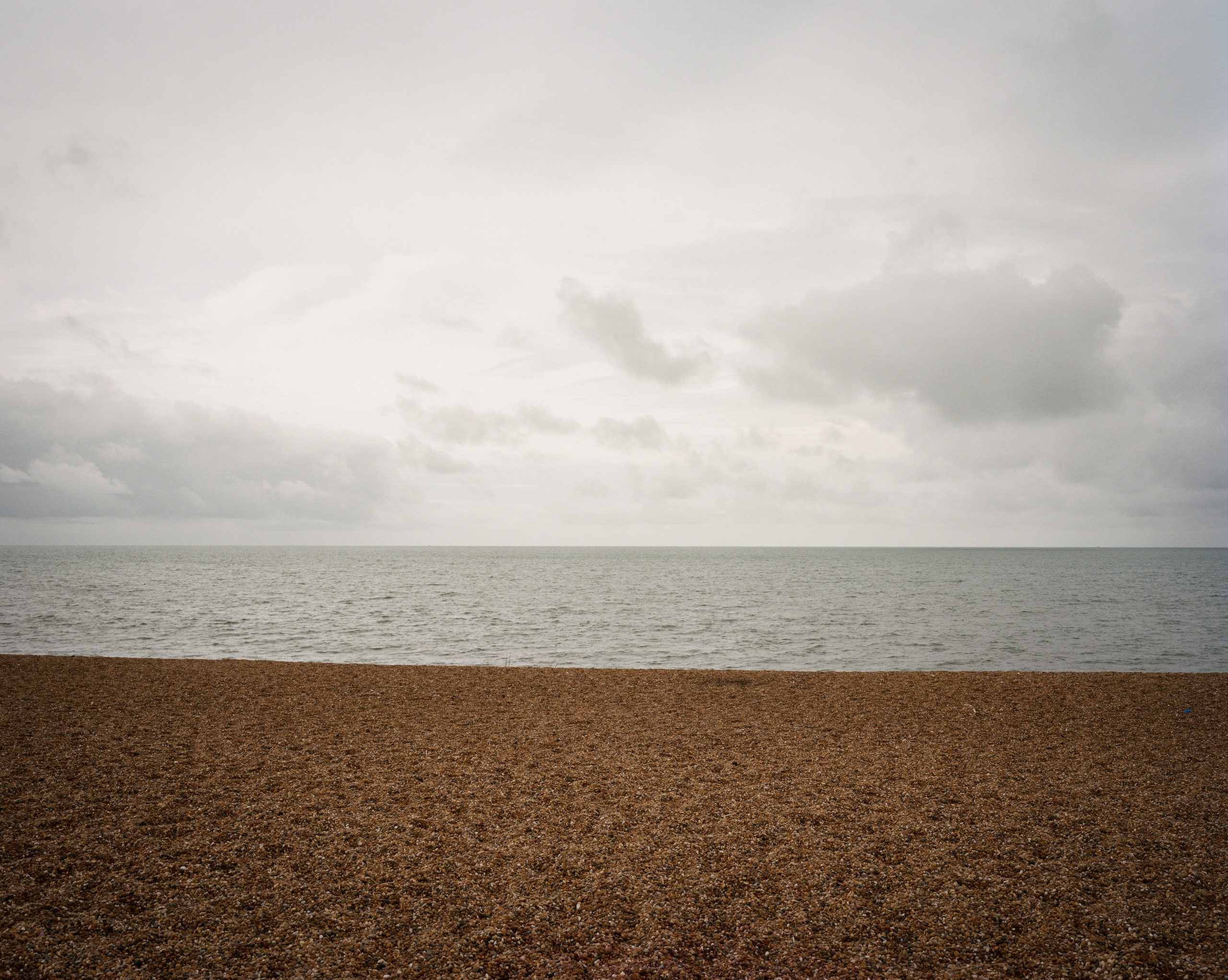
Lovelock was born in 1919, a child of the peace celebrations following the end of the First World War. His mother, Nell, had been working for the local council, and she knew of the tribunals that assessed whether conscientious objectors could be exempted from military service. Quakers were almost always exempted, so she was determined her son would be brought up in the Society of Friends. He attended Quaker Sunday school from the age of six. Quakerism turned out to be formative of his imagination and, later, his career.
“It was different from any other Sunday school I had encountered,” he told me recently. “Religion played only a small part, and it seemed that cosmogony was the subject taught at the school.”
He was very close to his father, who introduced him to nature and showed him how to forage for food. When Lovelock was seven, they went to the Natural History Museum in London to see the dinosaurs. Lovelock was not interested.
“My mind was filled with excitement about much more recent artifacts of a mechanical kind, the steam engines that I would see in the Science Museum next door,” he wrote in an introduction for a new edition of Gilbert White’s “The Natural History of Selborne.” “To me, these engines were far more fascinating than the remains of a long-dead lizard. I still cannot help wondering why we ignore these machines, which mark huge changes in energy usage, and stay fixated on the remains of those old lizard skeletons.”
His family was poor, too poor to pay for him to go to university. He later came to regard this as a blessing because it meant he wasn’t immediately locked into a silo of academia. Somehow, he created an education for himself, taking evening classes that led, when he was 21, to the University of Manchester.
The Second World War had begun, and he faced conscription. But he was a “conshy” — a conscientious objector.
“I never did cease being a pacifist,” he said. “I wouldn’t go out and kill anyone. I don’t mind facing any amount of danger, but not killing someone.”
“To me, these engines were far more fascinating than the remains of a long-dead lizard.”
He appeared before a tribunal to explain his reasons for not going to war, and the judges left it to him to do what his conscience told him to do. He was impressed by their reasoned kindness, and at the moment the verdict was delivered, he became a deep patriot, a decisive aspect of his character.
After Manchester, he worked for the U.K.’s National Institute for Medical Research (NIMR). By 1948, he had a PhD in medicine. But his education did not stop there; it never stopped. He is a supreme polymath and an autodidact of genius. When he was elected to the Royal Society, Britain’s leading scientific institution, in 1974, he was credited with work in the transmission of respiratory infections, air sterilization, blood clotting, the freezing of living cells, artificial insemination, gas chromatography and more. It was too early to include his most important work on Gaia.
In the midst of all this, he invented a device called the electron capture detector (ECD). I was bewildered when he first showed me this world-transforming machine in 1988 — “an unremarkable concoction,” I wrote for the Sunday Times Magazine, “of wires, tubes and a small chamber containing a radioactive source: ‘Don’t worry; it can’t escape,’ he said as a tube comes unplugged in my hand.”
This was all he needed to capture minute chemical traces in the atmosphere. He explained its power by saying a towel soaked with a chemical waved about in Japan could be detected by an ECD in England a week later. The sensitivity of its readings almost certainly provided evidence for Rachel Carson’s book “Silent Spring,” which blamed the indiscriminate use of the insecticide DDT for the destruction of wildlife.
What the ECD is usually remembered for is the detection of chlorofluorocarbons (CFCs) in the air over the South Atlantic Ocean. CFCs were used in refrigerators until they were found to deplete the ozone layer, which protects us from damaging levels of ultraviolet radiation. Fridge manufacturers argued that CFCs were not responsible because they did not disperse throughout the atmosphere. Lovelock first detected them over Ireland. He then hitched a ride on a boat heading for the Antarctic and found CFCs floating about there. In what must be the best example of international eco-cooperation, CFCs were phased out by the Montreal Protocol in 1987.

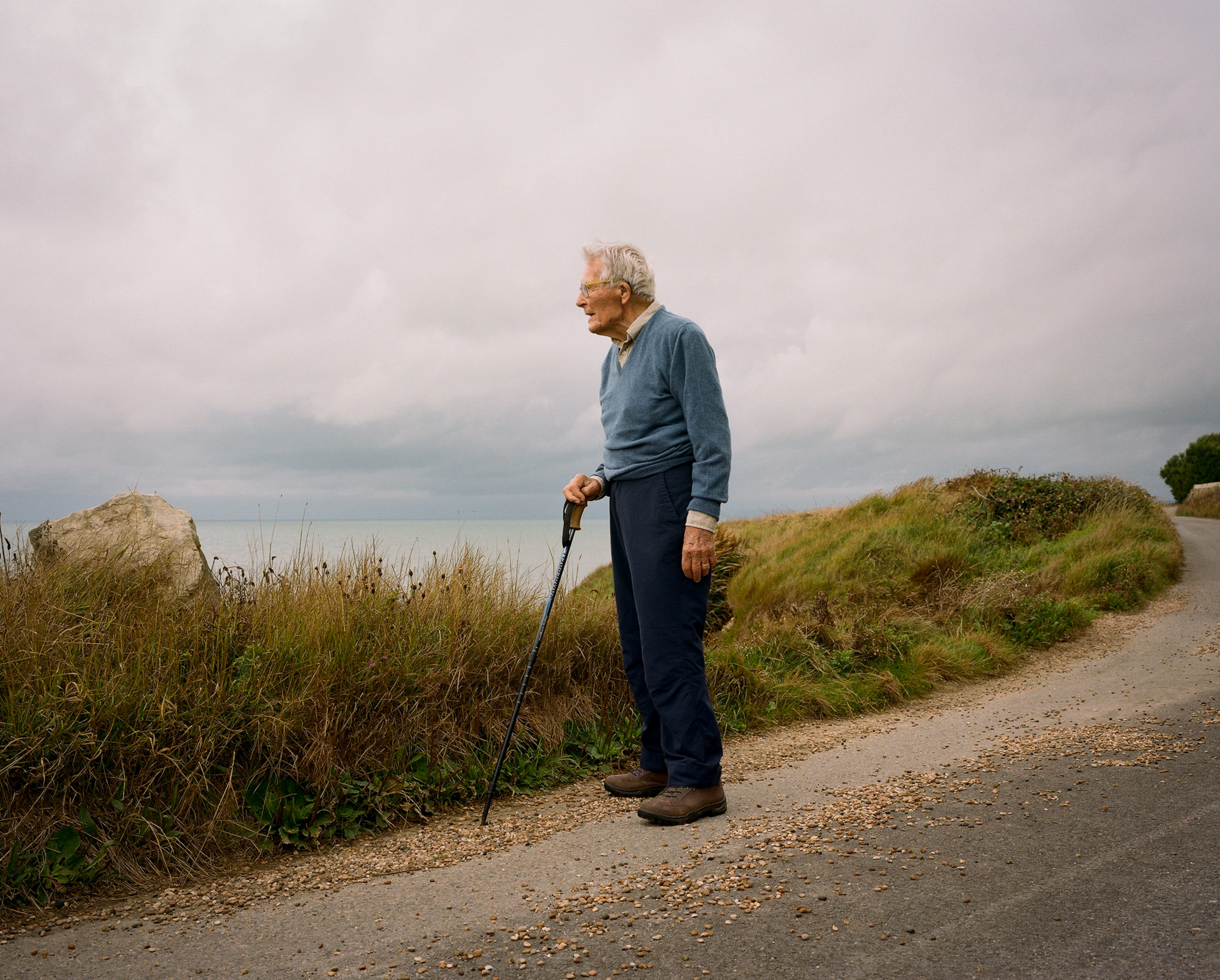
Lovelock resigned from the NIMR in 1961. It was a critical career decision. “I became a loner,” he told me. “That is, someone outside the establishment. Somehow, the academic establishment no longer accepted me as one of them and almost invariably failed to quote any papers that I have written.”
Ever since 1961, he has been an independent scientist, free to follow his research wherever it takes him. NASA invited him to try to find life on Mars. Curiously but characteristically, he told NASA what they least wanted to hear — that there was no life there.
This was before NASA’s Viking program, which landed two spacecraft on Mars and was, in part, intended to detect life. The general idea was that such landers would scoop up some Martian dirt and analyze the contents. But Lovelock compared the Martian atmosphere to that of Earth: the first is stable and uneventful, the second is unstable and very eventful. Life, he realized, caused the instability; there was, therefore, no life on Mars. He was probably right. Not only that, he had established the basis of Gaia — life’s modification of its environment.
In 1965, when he was in the U.S., he was asked if there was any way to find people hiding in dense tropical rainforests. This was not a casual question; America’s disastrous involvement in Vietnam had begun. His possible solution led to meetings with the CIA, which seemed to go nowhere. He was more successful with British intelligence operatives. They were looking for a way to track Soviet spies. His idea was to use a chemical marker on their cars that sensors could detect. The British spies were keen, but he was puzzled by the concern they showed for the health of their targets.
“Here we stand, and here we stay. We must submit to Gaia and do nothing to harm her.”
“I was baffled,” he wrote in his autobiography. “I imagined that few would care about the health hazards of a KGB agent in London. Not so: It was almost as if they regarded the opposition as merely rival civil servants and that they at least deserved the care needed to ensure a long and well-earned retirement at pension time.”
He worked for MI5, the British counter-intelligence and security service, until he was laid off in his nineties — possibly a record retirement age. He had been, in essence, Q, the gadget builder in the James Bond movies. He regards his forced retirement with mild regret.
“I understand, because you can’t really trust a 94-year-old with national secrets,” he said.
Lovelock’s intelligence work and patriotism are, at first glance, paradoxical to this other work. One part of him is a rebel, an evader of institutions, a dissenter, an outlier; the other part is an establishment figure. So establishment, in fact, that he has been made a “Companion of Honour” — a royally created group, membership of which is restricted to 65 people.
But perhaps it is not a paradox. The independent, free-thinking dissenter is a familiar figure in English history and, from the first moment I met him, I had this uncanny feeling I was talking to England as it is or should be — eccentric but truth-telling.
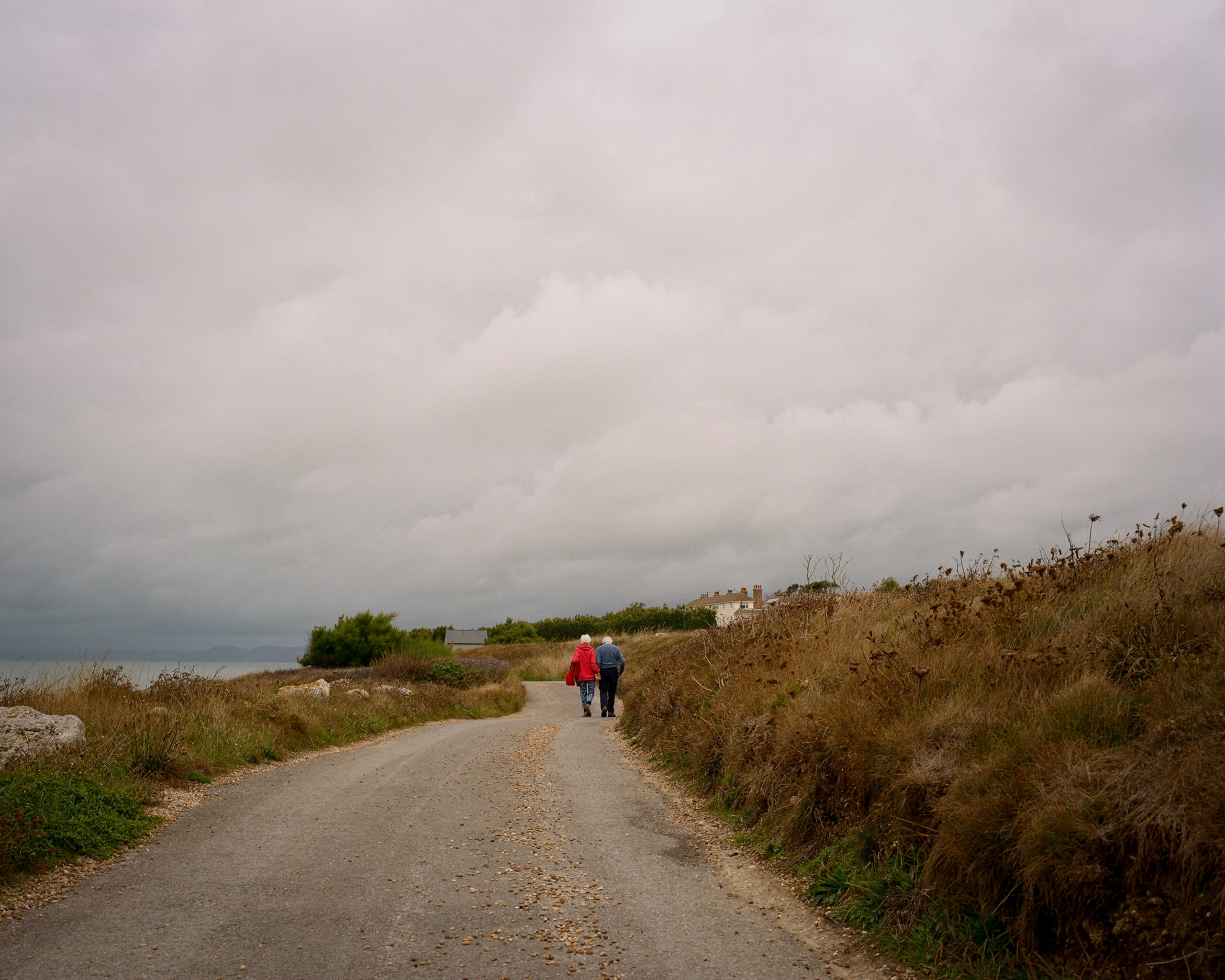
Until last year and the advent of his second childhood, his books continued to develop and refine his Gaian analysis. Then, something strange happened. He produced a 55,000-word text so peculiar and so unexpected that his publisher was baffled. The text then landed on my desk. It felt, at first, remarkably similar to that first meeting in 1988. “Is he deranged?” was followed swiftly by “Ah, I see!” Over three months — the publisher was anxious and time was short — I shortened, clarified and organized the text, added some poetry, and it was published as “Novacene: The Coming Age of Hyperintelligence.”
The work involved trips down to Dorset where Lovelock now lives with his American wife, Sandy, in a small house that used to be a coastguard’s cottage. It overlooks the magnificent sweep of Chesil Beach, a very Gaian prospect. Dorset is generally regarded as an oddity among English counties, and rightly so. On one of these trips, I was early, and I stopped to kill time at a little cafe near Lovelock’s home. I was the only customer, and the man behind the counter knew exactly who I was, where I had come from and where I was going. Lovelock, it turned out, holds weekly discussions in this cafe.
As ever with Lovelock, the core argument of the “Novacene” is simple. Artificial intelligence is accelerating. It will soon far exceed human capabilities. It will, among other things, think thousands of times faster than we do — the entirety of human thought since the first settlements and cities 12,000 years ago could be digested in minutes.
To these new beings (Lovelock refuses to call them machines; he prefers cyborgs), we would be like plants are to us — strange, sluggish creatures. But this is not the usual sci-fi tale of machines taking over while heroic humanity fights back. AI beings are likely to be as vulnerable to heat as humans. It will be in their interest, as it is in ours, to keep the planet cool. The best way to do this will be to preserve Gaia and, therefore, biological life, including us. We will be inferiors, but we can console ourselves that we have made possible the birth of a new era of consciousness.
“I have never read,” remarked one critic, “a jauntier book about artificial intelligence taking over the world.”
Novacene is Lovelock’s word for a new geological epoch, the successor to the “Anthropocene,” which, in his view, has lasted 308 years, starting with the installation of Thomas Newcomen’s steam engine in 1712. This was the period in which technology gave humanity power on a planetary scale; in the Novacene, this power is handed over to the cyborgs.
However, Charles Darwin still rules.
“Overarching the whole thing is natural selection,” he told me. “You can’t avoid it. That’s the driving force. This isn’t a takeover of the world; it’s an evolution. When mammals first appeared on Earth, things changed. But the things that existed beforehand continued to exist. This is where I keep coming back to — our relationship to the Novacene creatures is similar to ours to plants. Electronic life could only evolve from organic life.”
“To the cyborgs, we would be like plants are to us — strange, sluggish creatures.”
The Novacene may not last long. Geological epochs are generally thought to last millions of years, but Lovelock gives the Novacene about a century because of the rapid rate of change in a cyborg-dominated world. The post-Novacene is unknowable but it need not be catastrophic for humans and, most importantly, the problem of warming will likely have been conquered.
His great hope is that the cyborgs’ salvation of our planet will mean that human consciousness is preserved in the cosmos. He is not a believer in extra-terrestrial life. Those who do believe have been misled by sheer numbers — the estimates of two trillion galaxies with 100 billion stars in each. We are, most likely, alone, and that makes our self-awareness unique and infinitely precious.
“These huge numbers of cosmic objects are misleading,” he wrote in “Novacene.” “It took the blindly groping process of evolution through natural selection 3.7 billion years — almost a third of the age of the cosmos — to evolve an understanding organism from the first primitive life forms. Furthermore, had the evolution of the solar system taken a billion years longer, there would be no one alive to talk about it. We would not have had time to attain the technological ability to cope with the increasing heat of the Sun. … Our existence is a freakish one-off.”
When I spoke with him recently, I blithely asked where we now stood with the Novacene. He brought up the hornets.
“I think that, like spiders, insects, fish and birds, we could start living in nests. Indeed, we have been ever since we gathered in cities. Consider, for example, the fascinating difference between the totalitarian nests of termites and the highly organized society of bees’ nests, and perhaps even more so, hornets’ nests.”
He continued: “Thinking along these lines has got me deeply interested in hornets. When we lived at Coombe Mill, there were usually three nests within a short distance of our house. A local farmer looked across the boundary fence and said to me, ‘You are lucky, you have hornets on your land.’ I replied, somewhat amazed, ‘Why should that be lucky?’ The farmer replied, ‘If you have hornets, you will not have wasps, and you can enjoy a glass of beer in your garden.’”
That’s Lovelock: His mind forever voyaging over the mosaic of his imagination. The whimsicality and sweet ordinariness with which he tells his tales may distract over-earnest minds, but they are simply the playful surface of thoughts that often lie too deep and too strange for ordinary understanding.




